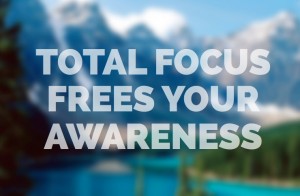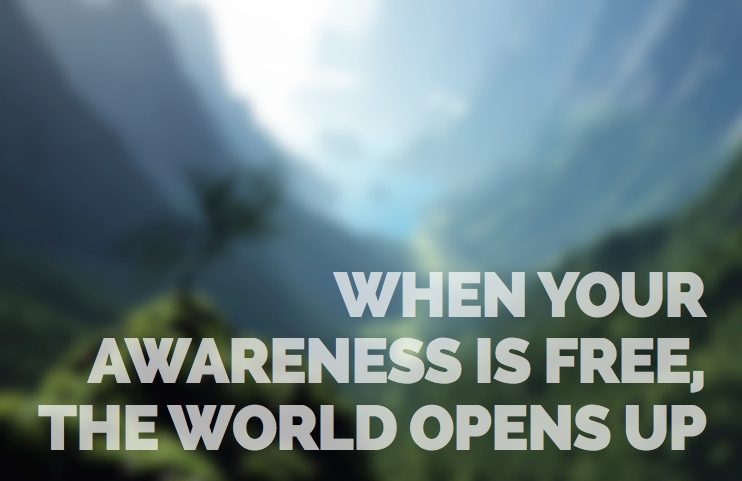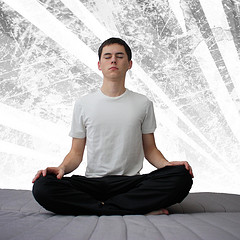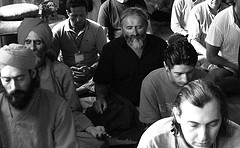
Meditation is a big topic.
There are countless approaches, benefits, techniques, and schools of practice. And if you’re like most people, you’re probably looking for a simple and comprehensive overview.
Where should you start? What are the different approaches? When should you meditate and for how long? Finally, what are the benefits of meditation and what does science tell us about it?
A Beginner’s Guide To Meditation
We created this beginner’s guide to meditation as an in-depth introduction for anyone interested in meditation and mindfulness. If you’re just getting started and you’re new to the art and science of meditation, you’ll find answers to your biggest questions and much more.
- What is Meditation?
- What is Mindfulness?
- Two Fundamental Approaches to Meditation
- Focused & Free Awareness Meditation Techniques
- A Common Myth About Meditation
- Why Should You Start Meditating?
- What Are The Benefits of Meditation?
- The Science
- The Scientific Power of Meditation
- Dan Harris on the Power of Meditation
- When Should You Practice & For How Long?
- How To Meditate: A Simple Way To Start Right Now
- The Counting Meditation
- How to Succeed in Meditation
- Tips on How to Breathe and Let Go
- 5 Free Resources to Get You Started

What Is Meditation?
Let’s start at the beginning. Meditation is a 2,500+ year old practice for training the mind. Historically a practice reserved for reclusive monks, kung-fu masters, austere yogis, and ochre-robed swamis, it’s now the preferred performance-enhancing practice of R&B moguls, Super Bowl Champions, Olympic athletes, and A-list celebrities.
Meditation has gone mainstream.
One reason for that is that meditation is generally considered one of the most effective ways to train and focus your attention. How does that work?
When you sit down to meditate, you allow yourself to become very still, relaxed, and alert. And then you focus your attention on one thing. Technically, it can be anything. But traditionally it’s something like your breath or a mantra—a word or phrase—which you repeat over and over again for the duration of your meditation.
When you do this, your mind will wander. That’s natural. The practice of meditation is all about bringing your attention back to the one thing you’re focused on. If you sit in meditation for an hour, your attention might drift away into thoughts and daydreams more than 500 times.
That’s fine. Your only job when you practice meditation is to bring your attention back when it strays from your object of focus. And it’s important to stay relaxed, still, and alert while you practice.
 As you do this over and over again, you’ll slowly enter into a highly relaxed and focused state of mind. This is often accompanied by a feeling of deep well-being. And now, science has shown us that the meditative state has extremely positive physiological and neurological effects.
As you do this over and over again, you’ll slowly enter into a highly relaxed and focused state of mind. This is often accompanied by a feeling of deep well-being. And now, science has shown us that the meditative state has extremely positive physiological and neurological effects.
We’ll get more into the science of meditation below.
What Is Mindfulness?
 I’m sure you’ve also heard a lot about mindfulness. According to John Kabat-Zinn, one of the chief exponents of this Buddhist practice, mindfulness is “the intentional, accepting and non-judgmental focus of one’s attention on the emotions, thoughts and sensations occurring in the present moment.”
I’m sure you’ve also heard a lot about mindfulness. According to John Kabat-Zinn, one of the chief exponents of this Buddhist practice, mindfulness is “the intentional, accepting and non-judgmental focus of one’s attention on the emotions, thoughts and sensations occurring in the present moment.”
But the way I like to think about it is this. Mindfulness is the art and science of paying complete attention to the one thing you’re doing in any given moment. Of course, paying attention only ever happens right now, so learning this art grounds you in the present moment like nothing else.
And it’s important to remember that mindfulness and meditation are two sides of the same coin. Another way to define mindfulness is meditation in action. You can bring the calm and focused attention you cultivate in meditation to everything you do—and that’s mindfulness. A strong meditation practice will imbue your attention and your actions with mindful presence.
Two Fundamental Approaches To Meditation
 In general, every meditation technique falls into one of two camps. Whatever type of meditation you practice, it’s either a focused awareness meditation or a free awareness meditation.
In general, every meditation technique falls into one of two camps. Whatever type of meditation you practice, it’s either a focused awareness meditation or a free awareness meditation.
Traditionally, focused awareness meditation is called “meditation with seed.” That means that you are focusing your mind on something like a mantra (think TM), your body sensations (Vipassana), or maybe you’re just counting your breath.
Free awareness meditation is referred to as “meditation without seed.” In this approach to meditation, you put your attention on the wide-open space of awareness itself. This is often considered an advanced approach to meditation.
 The trick with free awareness is this. You resist the temptation to focus on anything in particular. In response to everything, you do nothing. You accept and let go of everything that passes across the movie screen of your mind. It’s subtle and hard to master. At the same time, this practice yields rich rewards.
The trick with free awareness is this. You resist the temptation to focus on anything in particular. In response to everything, you do nothing. You accept and let go of everything that passes across the movie screen of your mind. It’s subtle and hard to master. At the same time, this practice yields rich rewards.
Focused and free awareness both lead to the same goal—equanimity, focus, relaxation, clarity, confidence, and deep ease. Whether you are practicing one or the other, your end game is a mind that’s grounded in the deepest part of you, independent of the trauma and drama of daily life.
You can read more about free and focused awareness here and listen to a guided meditation which incorporates both focused and free awareness.
Focused & Free Awareness Meditation Techniques
 Here is a short list of free and focused awareness techniques.
Here is a short list of free and focused awareness techniques.
Mantra Meditation: In this focused awareness practice you silently repeat a word or a phrase over and over again, keeping your mind trained on that one word.
Moving Meditation: Tai Chi and Qigong are two of the most popular forms of moving meditation. In these focused awareness practices, you use a combination of visualization, movement, and focus to draw chi or life force into your body and mind. For many people who easily get into The Zone, running is a form of moving meditation. Yoga and walking can also be forms of moving meditation when you practice them with mindful awareness.
Counting Your Breath: One of the simplest and most effective focused awareness techniques, this practice requires you to simply count each cycle of your breath. You simply stay focused and relaxed while you count each breath to 10, 50, or 100, and then start over again.

Vipassana Meditation: Vipassana is a free awareness practice in which you observe all the sensations that arise in your body and the thoughts that emerge in your mind. You aren’t focused on any one thing, sensation or thought, rather you’re letting everything pass across the screen of your awareness without reacting to it. You simply observe, note, and let it pass on by.
Guided Meditations: Guided meditations are a popular way to start learning meditation. These come in all shapes and sizes—from peaceful music and chanting, to visualizations and gentle relaxation instructions. Guided meditations are a great way to kick start your practice and get used to the experience of meditation. More seasoned guides can give you very deep experiences.
A Common Myth About Meditation
 One common myth about meditation is that you shouldn’t have any thoughts while you practice. This is not true. The goal of meditation is to learn how to be at ease no matter what’s happening in your mind. Meditation is training how to be calm and relaxed even when your mind is freaking out.
One common myth about meditation is that you shouldn’t have any thoughts while you practice. This is not true. The goal of meditation is to learn how to be at ease no matter what’s happening in your mind. Meditation is training how to be calm and relaxed even when your mind is freaking out.
One of the biggest reasons people fail at meditation is because you think your mind should be completely quiet or that you can’t stop your thoughts. By far the most common thing I hear from new meditators is that they can’t meditate because they have a busy mind that won’t calm down.
So yes, your mind may go silent at different times during your meditation. And that’s a beautiful and important experience. But you’re going to have tons of different experiences when you meditate, and it’s important to remember that meditation isn’t supposed to feel any particular way. It’s all about accepting things as they are without trying to change them.
Here is a simple but powerful metaphor from Deepak Chopra to help you understand the nature of your mind and the process of meditation:
Think of your mind like a flowing river. On the surface, a river flows the fastest and is broken up by waves and currents. But if you dive deeper, the waves disappear and the current is slower. Finally, at the bottom, where the water meets the riverbed, the current may be nearly motionless. The mind is like that, yet we identify only with its active, fast-moving surface. What lies deeper can’t be accessed by thought. You must allow your mind to seek its own quiet, to return to its own source.
When you start meditating, it’s going to take a little while for you to learn how to swim in the deeper currents of that river.
Why Should You Start Meditating?
 So you might be wondering, why should I care? What does any of this have to do with me? Those are great questions. When do you know if meditation is right for you?
So you might be wondering, why should I care? What does any of this have to do with me? Those are great questions. When do you know if meditation is right for you?
People come to this practice for different reasons. One of the biggest reasons people meditate is to manage stress. Stress management expert Elizabeth Scott underscores this point saying that:
The benefits of meditation are manifold because it can reverse your stress response, thereby shielding you from the effects of chronic stress. When practicing meditation, your heart rate and breathing slow down, your blood pressure normalizes, you use oxygen more efficiently, and you sweat less. Your adrenal glands produce less cortisol, your brain ages at a slower rate, and your immune function improves. Your mind also clears and your creativity increases.
Many people seek out meditation for health reasons. There is mounting evidence suggesting that meditation is a tonic for any number of physical ailments and conditions related to stress. And increasingly, when it comes to mental health, therapists are using meditation to model healthier ways to relate to the mind and overcome anxiety and negative thoughts.
Often, when you feel overwhelmed by the crush of life, meditation is an oasis. It helps you create some space from the chaos in your head. It helps you relax and refresh your perspective.
Mindfulness meditation is popular in the workplace as a way to build teamwork, increase focus, deal with criticism, and prepare for meetings and presentations.
 Of course, the traditional context of meditation is self-discovery. Through slowing down and observing the movement of your own mind, you can perceive and understand your habitual patterns of thought and behavior. You can recognize deep or hidden motivations within. And through regular meditation, you can marshal your attention to focus on the things that are most important to you—your goals and visions.
Of course, the traditional context of meditation is self-discovery. Through slowing down and observing the movement of your own mind, you can perceive and understand your habitual patterns of thought and behavior. You can recognize deep or hidden motivations within. And through regular meditation, you can marshal your attention to focus on the things that are most important to you—your goals and visions.
Last but not least, deep meditation can give you access to a part of you that feels limitless. These are the deeper currents that Deepak refers to above. Spending time resting in this space is positive beyond measure and gives you confidence in the inherent goodness of life.
What Are The Benefits of Meditation?
 As you get used to letting go in meditation, you’re going to start experiencing benefits—lots and lots of benefits.
As you get used to letting go in meditation, you’re going to start experiencing benefits—lots and lots of benefits.
Although advanced practitioners have talked about the positive effects of meditation for millennia, science has now jumped into the ring, adding the weight of a growing catalogue of research from prestigious institutions to back up these ancient claims.
There are several categories of benefit you can experience from meditation. There are emotional, psychological, and physical benefits. There are spiritual and professional benefits as well as biological, physiological, and neurological benefits. And we’ll list a lot those here.
But for me, it started simply. Twenty years ago, I started looking for deeper meaning and purpose in my life. I found it in meditation. Through rigorous practice, I discovered a powerful antidote to my anxiety and a source of confidence and wellbeing that changed my basic orientation to life.
For me, meditation was nothing short of life-changing. Through this ancient practice, I discovered a new part of myself that seemed limitless and positive beyond measure. And more than anything, it showed me that my deepest happiness would never come from a source outside myself.
So that’s my short story. But what does the science tell us about the benefits of meditation?
The Science
 Since the late 1960’s, around the time that Dr. Herbert Benson published his landmark book, The Relaxation Response, researchers have been investigating the relationship between meditation and stress. They discovered that meditation triggers something called the relaxation response. What is that?
Since the late 1960’s, around the time that Dr. Herbert Benson published his landmark book, The Relaxation Response, researchers have been investigating the relationship between meditation and stress. They discovered that meditation triggers something called the relaxation response. What is that?
To quote Dr. Benson, “The relaxation response is a physical state of deep rest that changes the physical and emotional responses to stress… and [it’s] the opposite of the fight or flight response.”
And what’s one of the best ways to elicit the relaxation response? You guessed it, meditation. Since 1971, there have been numerous studies on the relaxation response which have highlighted the following short-term benefits:

- lower blood pressure
- improved blood circulation
- lower heart rate
- less perspiration
- slower respiratory rate
- less anxiety
- lower blood cortisol levels
- more feelings of well-being
- less stress
- deeper relaxation
Indeed, because meditation stimulates our relaxation response, it is also one of the most effective ways to combat stress. That has given rise to an explosion of interest in mindfulness-based practices like Jon Kabat-Zinn’s Mindfulness-Based Stress Reduction (MBSR) and Dr. Richard Miller’s iRest.
 Recently, with the advancement of neuroscience and advanced imaging technologies, we have started to see the profound influence of meditation on the brain. An article from Forbes details the following ways that meditation actually changes the brain.
Recently, with the advancement of neuroscience and advanced imaging technologies, we have started to see the profound influence of meditation on the brain. An article from Forbes details the following ways that meditation actually changes the brain.
- Meditation Helps Preserve the Aging Brain
- Meditation Reduces Activity in the Brain’s “Me Center”
- Its Effects Rival Antidepressants for Depression, Anxiety
- Meditation May Lead to Volume Changes in Key Areas of the Brain
- Just a Few Days of Training Improves Concentration and Attention
- Meditation Reduces Anxiety — and Social Anxiety
- Meditation Can Help with Addiction
- Short Meditation Breaks Can Help Kids in School
In fact, the benefits of meditation identified by neuroscience have become so compelling that the Harvard Business Review published an article asserting that meditation is no longer a mere luxury for business leaders, it’s an imperative.
Here are two short entertaining videos where you can learn more about the benefits of meditation.
The Scientific Power of Meditation
Dan Harris On The Science of Meditation
When Should You Practice & For How Long?
Technically, you can practice meditation at any time of day. It largely depends on why you want to meditate to begin with. For example, if you have trouble sleeping, it might make sense to meditate just before bedtime. If you struggle with stress and anxiety during the day, you might try several short meditations throughout the day.
 But in general, most experts and teachers agree that the best time of day to meditate is in the morning. After meditating for 20 years, I wholeheartedly agree with this. I feel like meditating in the morning, ideally at the same time every day, grounds and centers me for the rest of the day. I carry the emotional, psychological, and physical benefits with me all day long.
But in general, most experts and teachers agree that the best time of day to meditate is in the morning. After meditating for 20 years, I wholeheartedly agree with this. I feel like meditating in the morning, ideally at the same time every day, grounds and centers me for the rest of the day. I carry the emotional, psychological, and physical benefits with me all day long.
And how long should you meditate to get results? If you’re starting out, I recommend anywhere from 5 to 10 minutes a day. You can start with even less. Maybe try it for 2 minutes in the morning. And when you can sit still and relax for that long, move to 3 minutes. And then increase your time every day as you get comfortable with the practice.
The most important thing is to just start. The next most important thing is to be consistent. You are trying to set a new groove. So simplicity is ideal. The way I think about it, 5 minutes is 100% more than no minutes. And so is 1 minute. You just need to do it. You need to start and you need to keep going. Pick the amount of time that works for you and do it every day.
After a few weeks, then you can start to evaluate the impact and results of the meditation. Because we are all different, there isn’t a right amount of time to meditate. But it’s also like learning any new skill or practicing an instrument. The more time you invest in practice, the more results you’re going to see.
How To Meditate: A Simple Way To Start Right Now
 If you want to start meditating right now, here is a simple way to begin. Find a comfortable place to sit. Make sure your spine is straight.
If you want to start meditating right now, here is a simple way to begin. Find a comfortable place to sit. Make sure your spine is straight.
Once you are settled and seated comfortably, you can either close your eyes or leave them slightly open, gazing at a point on the floor in front of you. Now you’re ready to begin practicing the art of attention.
As you breathe in, pay attention to your inhalation, feeling it fill your lungs, and then exhale, easily and naturally, counting “One” in your mind as you do so. Do this with your next breath, counting “Two” as you exhale, and with the next, “Three,” and so on. When you get to “Five,” begin again with the next breath at “One.” 1, 2, 3, 4, 5. 1, 2, 3, 4, 5.
If you get distracted and lose count, no problem–just start again at “One.” Don’t force your breathing, but allow yourself to completely relax while remaining fully alert, focused only on your breathing as you count silently in your mind, one breath at a time.
The Counting Meditation
Here’s a short video where I lead another simple focused awareness meditation called the counting meditation. You’ll see how simple it is and then you can to do it yourself whenever you want.
How To Succeed In Meditation
A lot of people start meditating and quickly give up. Often, that’s because they haven’t managed their expectations. You think your mind should be quiet like a blissfully placid lake on a summer morning. I’m sorry to say it, but that’s unlikely.
You need to know that you’re going to probably experience a whole range of new feelings and some of them are going to be foreign to you and maybe uncomfortable. That’s completely natural. Here’s the most important tip I can give you. I call it the Golden Rule of meditation. Are you ready?
Don’t make a problem.
 Yes, it’s that simple. No matter what happens, stay calm and carry on. For new and experienced meditators, this is a priceless tip. If you can succeed in never making a problem out of any experience that you have in meditation, you’ll succeed. You’ll also start to realize that meditation doesn’t feel like anything in particular. Instead, it’s the choice and process of letting go and accepting things as they are and not fighting against your life as it is.
Yes, it’s that simple. No matter what happens, stay calm and carry on. For new and experienced meditators, this is a priceless tip. If you can succeed in never making a problem out of any experience that you have in meditation, you’ll succeed. You’ll also start to realize that meditation doesn’t feel like anything in particular. Instead, it’s the choice and process of letting go and accepting things as they are and not fighting against your life as it is.
My second tip for success is this. You need to make meditation a habit. Unless you do, it will be hard to reap the benefits meditation can offer you. Weave meditation into your morning routine. Make it a regular activity every day at the same time and in the same place.
Research from University College London indicates that it takes approximately 66 days to create a new habit like meditation. You can learn more about how to create a successful meditation habit here.
 Third tip: I think it’s important to feel that you are making progress in meditation. That’s another way that you’ll ensure that meditation becomes a lasting habit. One way to do this is to take note of all the signs of your success and progress. Often these signs are subtle, so pay attention when you start to notice them.
Third tip: I think it’s important to feel that you are making progress in meditation. That’s another way that you’ll ensure that meditation becomes a lasting habit. One way to do this is to take note of all the signs of your success and progress. Often these signs are subtle, so pay attention when you start to notice them.
Fourth tip: Another way to boost your meditation practice is to meditate with others. If there is a local group you can meditate with, I highly recommend it. Meditating with other people is powerful. It can give you access to deeper states of focus and relaxation.
Tips On How To Breathe & Let Go
 A common question people have about meditation concerns breathing. If you want to know how to breathe in meditation, I recommend that you keep it simple. Unless you are practicing a particular form of yogic or breathing meditation or pranayama, just allow your breath to be natural, whether you are counting it or not. Sometimes you may want to take a few deep breaths at the beginning of your practice to let go of stress and flush your blood with oxygen.
A common question people have about meditation concerns breathing. If you want to know how to breathe in meditation, I recommend that you keep it simple. Unless you are practicing a particular form of yogic or breathing meditation or pranayama, just allow your breath to be natural, whether you are counting it or not. Sometimes you may want to take a few deep breaths at the beginning of your practice to let go of stress and flush your blood with oxygen.
And one of the most important things you can learn from meditation is the art of letting go. Meditation is really about letting everything go, which is another way of accepting everything as it is. One of the greatest challenges you’ll encounter in meditation is simply doing nothing.
We are deeply programmed and conditioned to respond to different patterns of thought and feeling. In meditation, you make the noble effort to not respond to any thought, feeling, or sensation. You accept all of it and let it go.
As you master this simple but profound practice of letting go, you will encounter a part of yourself that is always fresh, calm, focused, and untroubled.
What Now? Five Free Resources To Get You Started
So now you have an overview of meditation. Wondering about your next steps? I recommend you strike while the iron is hot. Here are my top 4 free resources to get you started on the path of meditation, in order of importance.
1. Take Our Free How To Meditate Mini Course
>> Learn the basics and start meditating in minutes
2. Sign Up For Daily Meditation Quotes
>> Get 100 beautifully illustrated quotes
3. Subscribe to The OneMind Podcast
>> Interviews with teachers, scientists, and every day practitioners
4. Take The Meditation Quiz
>> Get a personalized series of guided meditations
5. Listen To Our Guided Meditations
>> Listen here
(Photos via Flickr CC: Astrid Westvang, Brian Carson, Premasagar, Zachary Veach, Techniker Krankenkasse, Michael Loudon, Randy Heinitz, Markus Grossalber, Henri Bergius)